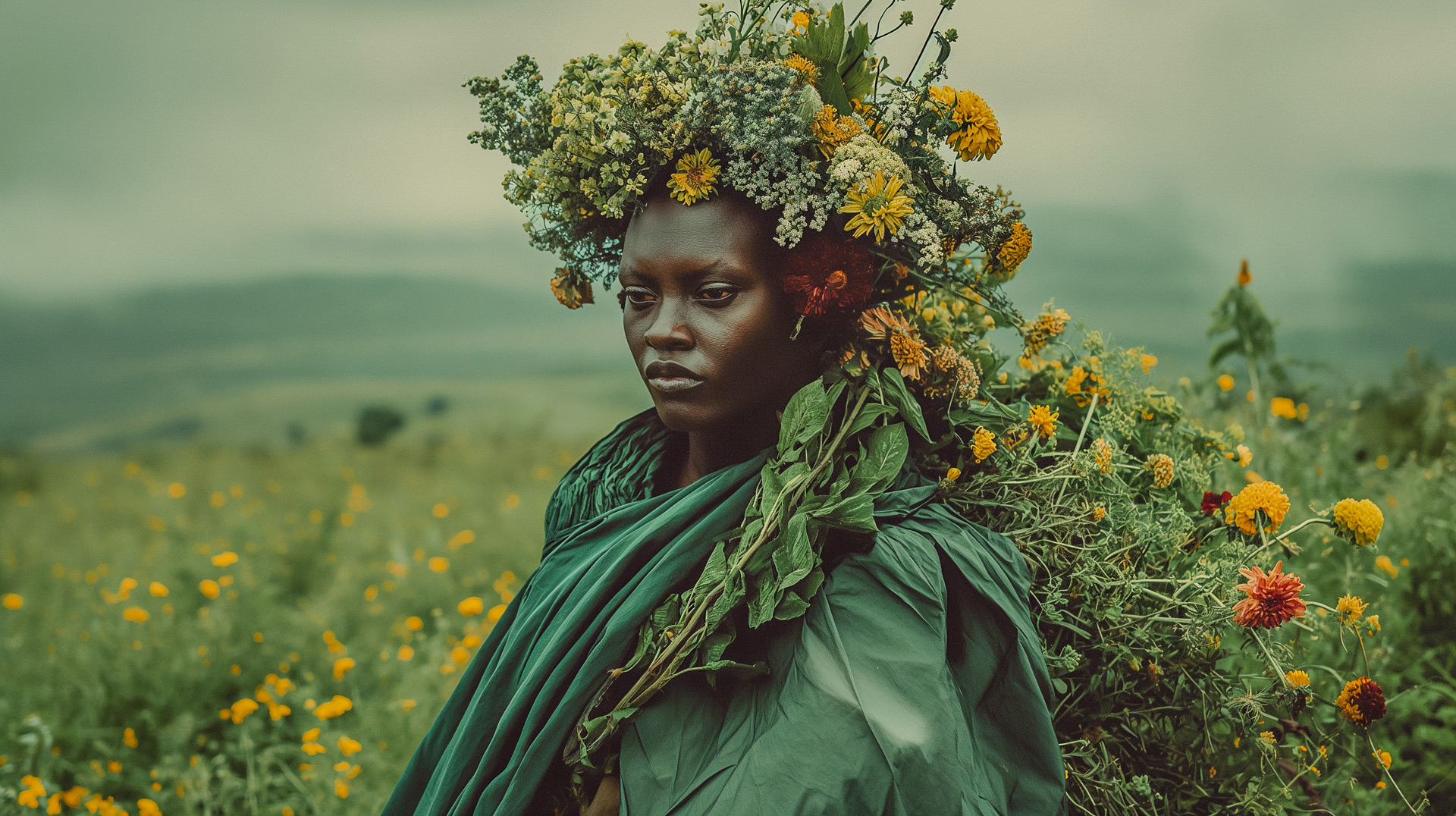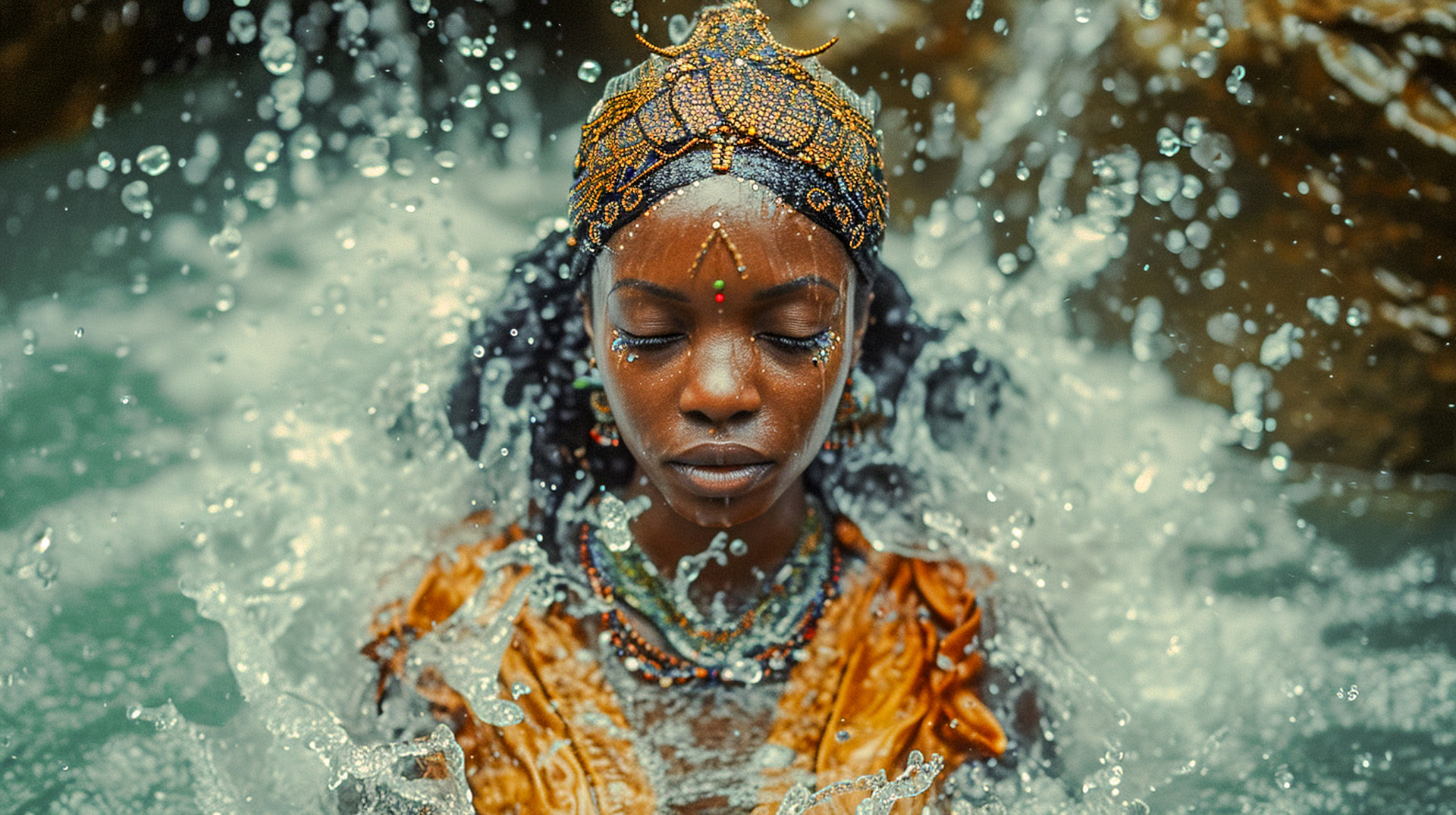The Sacral Vessel: Embodying Femininity in African Mythology
This is an exploration into the reverence of femininity that weaves through the very fabric of African lore. Here, we peel back the layers, revealing how the concept of the feminine extends far beyond physical form—it is celebrated as the crucible of creation and the keeper of cosmic continuity. In our intimate journey, we uncovered how femininity is memorialized not as a giver of life alone, but as the sacred chalice that upholds and carries it. This is the quintessence of the feminine—a chalice of creativity, a cauldron of cosmos, and an incubator for ideas and civilizations. The female form, with its curves and contours, is the most visible expression of this powerful essence, yet the feminine spirit transcends gender, touching all aspects of existence.

I. The Body as Divine Container
At the heart of African stories, the nurturing spirit of the feminine is sacred, seen as vast, generous wombs from which all of creation springs. Look to figures like the Egyptian goddess Nut, who wraps the cosmos in her embrace, and the Ethiopian deity Atete, who signifies life's nurturing fountain—both are radiant examples of how femininity is a portal of unending potential and existence.
- The body is a revered vessel of life and spirituality.
- Creation myths depict the world as birthed from sacred feminine forms.
II. Sacred Orifices: The Points of Transition
Just as the mouth takes in nourishment and the lungs draw breath, so do sacred points on the female form act as channels for life's ebbs and flows. These spiritual wellsprings remind us of deities like Oshun, whose followers engage in a sacred exchange—offering and receiving blessings, reflecting the perpetual give-and-take that keeps the rivers of life flowing.
- Deities such as Oshun emphasize the cycle of spiritual generosity.
- Life is constantly renewed through sacred transitions.

III. The Encapsulation of Dualities within the Vessel
The feminine is a remarkable harmony of life's nurturing embrace and its tender release. Figures like the Igbo goddess Ala capture the continuum of birthing and reclaiming, a perpetual tango of beginning and closure that is as age-old as it is present in our African spiritual frame of reference.
- Feminine archetypes in mythology demonstrate the cycle of life and return.
- The matriarchal vessel represents protection and transformation.
IV. The Waters of Femininity: Fluidity and Creativity
Water is the quintessential force of change—constantly adapting, always creating. For instance, Mami Wata encapsulates water's transformative magic, aligning the undulating essence of femininity with an ever-evolving dance of intuition, creativity, and becoming.
- Water is a symbol of feminine adaptability and creativity.
- Continuous transformation is a fundamental element of the divine feminine.

V. Integration of Body and Cosmos: The Vessel Expanded
The tangible vessel we know is merely the start—our bodies and souls stretch out to touch the cosmos itself. Diety figures like Auset act as the conduit between the earth we walk and the heavens we aspire to reach, standing testament to the seamless tapestry into which our lives are interwoven.
- The vessel connects the personal to universal truths.
- Cosmic integration is evident in the portrayal of goddesses like Auset.
Conclusion: The Mythic Vessel's Legacy in African Spirituality
Femininity's mighty vessel is not just a beacon of where we began, but guides us in the now—in our spiritual meandering and growth. It holds the light of ancestral wisdom, inspiring our continuous quest for understanding, connection, and enlightenment.
- The mythic vessel carries onward the wisdom of the ancestors.
- It supports a journey of understanding and enlightenment.
